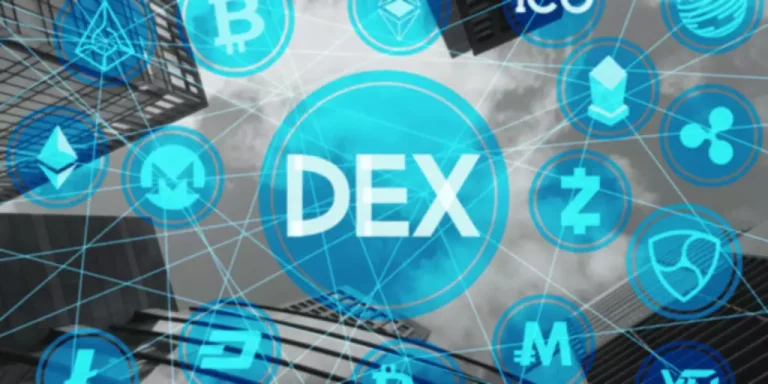Content
Depending upon your level of trading, the sales charges you pay for each purchase or sale could erode your investment return. Inverse and leveraged ETNs, for example, seek to deliver set positive or negative multiples of the performance of a given benchmark or index over a specified period of time, often from the close of one trading day to the next. Instead, ETFs—and ETPs more generally—employ a unique share issuance and redemption mechanism. An ETF enters into contracts with financial institutions (typically large broker-dealers) to act as “authorized participants” (APs). APs purchase and redeem shares Yield Farming directly with the ETF in the primary market in large blocks of shares called creation units.
What Is an Exchange-Traded Fund (ETF)?
There are actively managed ETFs that mimic mutual funds, but they come with higher fees. When mutual funds change their holdings, any profits from selling investments are considered “capital gains” and are taxed. The shareholders, aka the people who own shares in the mutual fund. ETFs are structured in a unique way that helps shareholders reduce the annual taxes on their holdings. You typically only realize a gain (or etp vs etf a loss) when you sell shares of an ETF. To learn the nuts and bolts of how that’s done, check out the article Inside ETFs.
Exchange-Traded Funds 101 for Economists
ETFs and mutual funds both allow you to invest in a diverse portfolio of securities, but they each have different investment objectives. If you want to make https://www.xcritical.com/ your own trades and likely incur fewer expenses (if you were to choose passively managed ETFs over actively managed mutual funds), you may want to consider ETFs. However, if you prefer a portfolio manager overseeing your investments, mutual funds may be more appropriate. International ETFs provide investors exposure to stocks and bonds from individual countries, like China; regions and subregions, like Latin America; and specific types of economies, including developed, emerging and frontier. As with domestic ETFs, international ETFs cover a broad range of specific sectors, investing strategies, factors and styles. Investing in international stocks and bonds can help investors reduce risk and potentially expose them to growth opportunities not available in U.S.-only portfolios.
- The ability to purchase and redeem creation units gives ETFs an arbitrage mechanism intended to minimize the potential deviation between the market price and the net asset value of ETF shares.
- The intraday pricing of ETPs provides trading flexibility because you can monitor how the price is doing and don’t have to wait until the end of the day to know your purchase or sale price.
- Actively Managed ETFs – these ETFs are being handled by a manager or an investment team that decides the allocation of portfolio assets.
- In the 1980s, AMEX was suffering from low profitability and not attracting enough business.
- The lower the expense ratio, the more of the fund’s earnings investors get to keep.
- Find VAI’s Form CRS and each program’s advisory brochure here for an overview.
- These companies’ dividends are collected by the ETF issuer and distributed to investors, typically quarterly, based on the number of shares the investor owns in the ETF.
What are exchange-traded funds (ETFs) and how do they work? An investor guide
NYSE Arca has the greatest market share of traded volume and greatest depth of liquidity across all U.S. By offering the most comprehensive trading programs, our market makers are incentivized to provide additional liquidity resulting in better trading for your ETFs. Because ETFs are traded on stock exchanges, they are easily bought or sold.

Approval of any bank product or service is not contingent upon purchasing insurance from Synovus Bank. Insurance products marketed through Synovus and its affiliated companies are underwritten by insurance companies not affiliated with Synovus. All investing is subject to risk, including the possible loss of the money you invest. Diversification does not ensure a profit or protect against a loss. Conversions are allowed from both Investor and Admiral™ Shares and are tax-free if you own your mutual fund and ETF Shares through Vanguard. You may leave this website when you access certain links on this website.
The risk of loss in trading foreign currency can be substantial and may be magnified if trading on margin. Customers should therefore carefully consider whether such trading is suitable for them in light of their financial condition, risk tolerance and understanding of foreign markets. It might seem strange to pick a time to sell an ETF you only just bought, but having a clear plan from the start could help you maximize your potential profit or at least minimize your potential loss. For instance, you might want to pick an upper and lower price your ETF could hit as your get-out signals. Consistent with the desire to use ETFs for passive exposure to broad market indices, only 19% of respondents show any interest in the future development of actively managed equity ETFs. Closed-end funds are not considered to be ETFs; even though they are funds and are traded on an exchange they do not change the number of shares they have issued, unlike an ETF.
A swap in finance is a contract in which two parties agree to exchange the cash flows of one financial instrument for another. You can also buy on margin or sell short, but you’ll need to be preapproved for these types of transactions based on your level of experience. Read the next module, which compares ETFs to other investment options, to continue the course. If you are unsure about the meaning of any information provided, please consult your financial or other professional adviser.
However, the difference between an index fund and an ETF is that an ETF tends to be more cost-effective and liquid than an index mutual fund. You can also buy an ETF from a broker who will execute the trade throughout the trading day, while a mutual fund trades via a broker only at the close of each trading day. The supply of ETF shares is regulated through creation and redemption, which involves large specialized investors called authorized participants (APs). When an ETF wants to issue additional shares, the AP buys shares of the stocks from the index—such as the S&P 500 tracked by the fund—and sells or exchanges them to the ETF for new ETF shares at an equal value. An alternative to standard brokers is a robo-advisor like Betterment and Wealthfront.An ETF’s expense ratio is the cost to operate and manage the fund. This content is general in nature and does not constitute legal, tax, accounting, financial or investment advice.
ETFs are similar to mutual funds in that you can easily buy a diversified but focused basket of securities. Different ETFs focus on different asset classes, such as stocks, bonds, or commodities. A few attempt to deliver returns that are the opposite of a particular index. Like ETFs, ETNs trade on exchanges, and their returns are linked to a market index or other benchmark.
One of the most basic types of investment funds is a mutual fund, a managed portfolio or pool of stocks, bonds and other securities that investors can buy shares in. Part of the appeal of ETFs is their liquidity, which provides the flexibility to turn an investment into ready cash quickly, with no loss in value. In most cases, mutual funds can only be bought or sold once a day at a price established at the market close.
The ability to purchase and redeem creation units gives ETFs an arbitrage mechanism intended to minimize the potential deviation between the market price and the net asset value of ETF shares. The most active ETFs are very liquid, with high regular trading volume and tight bid-ask spreads (the gap between buyer and seller’s prices), and the price thus fluctuates throughout the day. This is in contrast with mutual funds, where all purchases or sales on a given day are executed at the same price at the end of the trading day. Investors can buy shares in U.S.-listed companies from the U.K., but due to local and European regulations, you’re not allowed to purchase U.S.-listed exchange-traded funds (ETFs) in the U.K. There are U.K.-based ETFs that track U.S. markets, as long as it has the ‘UCITS’ moniker in the name.

With a strong understanding of your own investment needs, you can feel confident when investing in ETFs for the first time. Transactions in shares of ETFs may result in brokerage commissions and will generate tax consequences. In addition, investors buy and sell ETF shares with other investors on an exchange. As a result, the ETF manager doesn’t have to sell holdings — potentially creating capital gains — to meet investor redemptions. Mutual fund shareholders, on the other hand, redeem shares directly from the fund.
Investors can buy and sell ETP shares throughout the trading day, at prices that may fluctuate. Like with stocks, ETP investors are typically faced with a bid-ask spread. This might be almost zero for some ETPs but much wider for other products, so do your homework.
As an example, iShares Core ETFs average about one-tenth the net expense ratio of most mutual funds.1 The impact of these cost savings can be meaningful, particularly over time or when market returns are low. Before engaging Fidelity or any broker-dealer, you should evaluate the overall fees and charges of the firm as well as the services provided. $0.00 commission applies to online U.S. exchange-traded funds (ETFs) in a Fidelity retail account only for Fidelity Brokerage Services LLC (FBS) retail clients. The sale of ETFs is subject to an activity assessment fee (from $0.01 to $0.03 per $1,000 of principal). Please note, this security will not be marginable for 30 days from the settlement date, at which time it will automatically become eligible for margin collateral.
